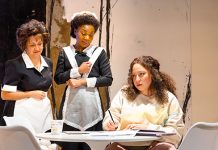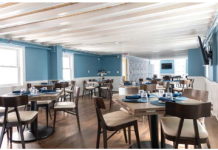By Linda McK.Stewart
“Undiscovered.” When speaking of destinations, isn’t that the one word that unfailingly quickens our imaginations?
But if, as time and budgets so often oblige us, we must confine ourselves just to our own hemisphere, the word “undiscovered” seems close to useless. What with GPS, Google maps, with satellite photography that can invade a polar bear’s Arctic den or plumb the salty depths for 16th century wrecks, where and when can we allude to any place as “undiscovered?”

But if you allow metaphorical use of that titillating adjective, then I think we can truthfully speak of Vieques as “undiscovered.” True, for the last 70 years the U.S. Navy has had its diabolical way with that small island, 21 miles long, 4 miles wide, lying like an afterthought 6 miles off the southeast coast of Puerto Rico. But for ordinary travelers like ourselves, Vieques has long been, as the cartographers of old would put it, terra incognita.
Like so many scraps of Caribbean real estate, Vieques was subjected to the ruthless rule of European colonizers – the Spanish, the Brits and once in a while the Dutch and the French. From the early 1500s on, they came and went in successive salvoes of cannon fire until 1898 when Uncle Sam stepped in and Puerto Rico, Vieques included, came under U.S. rule.
Thanks to its benign climate and 9,000 hard-working, Spanish-speaking residents, Vieques managed nicely with a thriving agricultural and fishing economy. Cattle flourished. So did the island horses, used for plowing, hauling and transportation. But beginning in 1943, thanks to an ever-expanding U.S. Naval presence, farming was gradually abandoned. More than 3,000 islanders were relocated to St. Croix. Those farmers who remained quit the land to take construction jobs for the U.S. military which, in short order, appropriated two-thirds of the island. Fields once producing sugar cane, bananas and citrus went unplanted. Horses and cattle retreated to the dense undergrowth to fend for themselves.
Between 1943 and 2003 the Navy dropped millions of pounds of bombs, artillery shells, rockets, napalm, Agent Orange and depleted uranium. In addition to weapon-testing, the island served as the ideal location on which to practice sea-to-land excursions and served as such from the early days of Vietnam through the invasion of Iraq. Tourism was, to put it mildly, quiescent.
Popular and political protest against such wholesale abuse of the island rose and fell throughout the years. It was often pointed out that there were many islands of comparable size that were uninhabited. Why would they not serve the Navy just as well or better than Vieques? But the Navy insisted that Vieques and only Vieques could serve their needs. The stalemate remained stolid, inflexible – until 1999 when a civilian was blown to bits on a beach by a buried explosive. He was certainly not the first such casualty but somehow it was this particular death that ignited the media.
Soon an outcry of global proportions obliged the Navy, at long last, to rethink its presence in Vieques. In 2003 the naval base closed. In 2005 Congress voted $200 million to deactivate or remove dangerous ordnance. Gradually, miles of razor-barb wire were baled up. “Off limits” signs came down. Teams of bomb squads combed the tropical underbrush to remove deadly material, often buried well below the surface. True, the money appropriated by Congress fell far short of the true costs of ridding the island of so many decades of death-dealing hardware. But, gradually the island’s plight has found support both vocal and financial from other interests dedicated to conservation and habitat-restoration. Tourism, not with lightning speed, but gradually and inexorably, is asserting itself across the island.
Land values have risen sharply. Horses, long accustomed to foraging in the woodlands, now graze on well-clipped lawns and rose-rimmed gardens. Visitors are discovering the island’s beautiful beaches, many “officially” sign-posted as having been fine-tooth combed of any and all dangerous debris.
B and B’s are springing up and private homeowners, eager to rent by the week or the season, are making themselves known through the Internet. In addition to the island’s natural beauty and the appeal of a brand of tourism still in its infancy, Vieques holds an ace card for naturalists, professional and amateur alike. For reasons that biologists cannot fully explain, the bioluminescent bay, unfortunately called el Puerto Mosquito on Vieques, shelters one of the world’s largest, brightest concentrations of single-cell pyrodinium, luminous infinitesimal organisms. By night these organisms light the waters with an eerie luminescence, so bright that kayakers and canoeists can easily read a printed page by the light.
A Puerto Rican-based tour company called Island Adventures conducts night tours through the brightly glowing waters. To minimize intrusion the tours use near-silent, electric-powered craft. Bilingual guides, speaking in low tones, discuss the ecology of the bay and its surroundings. Photographers of every stripe have a field day in an effort to capture the miracle of the illuminated waters.
It’s an irony not lost on the growing number of visitors that Vieques, so long dominated by the technology of death and destruction, is now realigning itself with forces dedicated to environmental protection and habitat restoration. It’s Vieques, maybe not “undiscovered.” Let’s just call it, “Vieques re-discovered.”
IF YOU GO: For detailed information about Vieques and/or Puerto Rico, call 800-866-7827. For Island Adventures’ Bio-Bay Tours call 787-741-0720.














